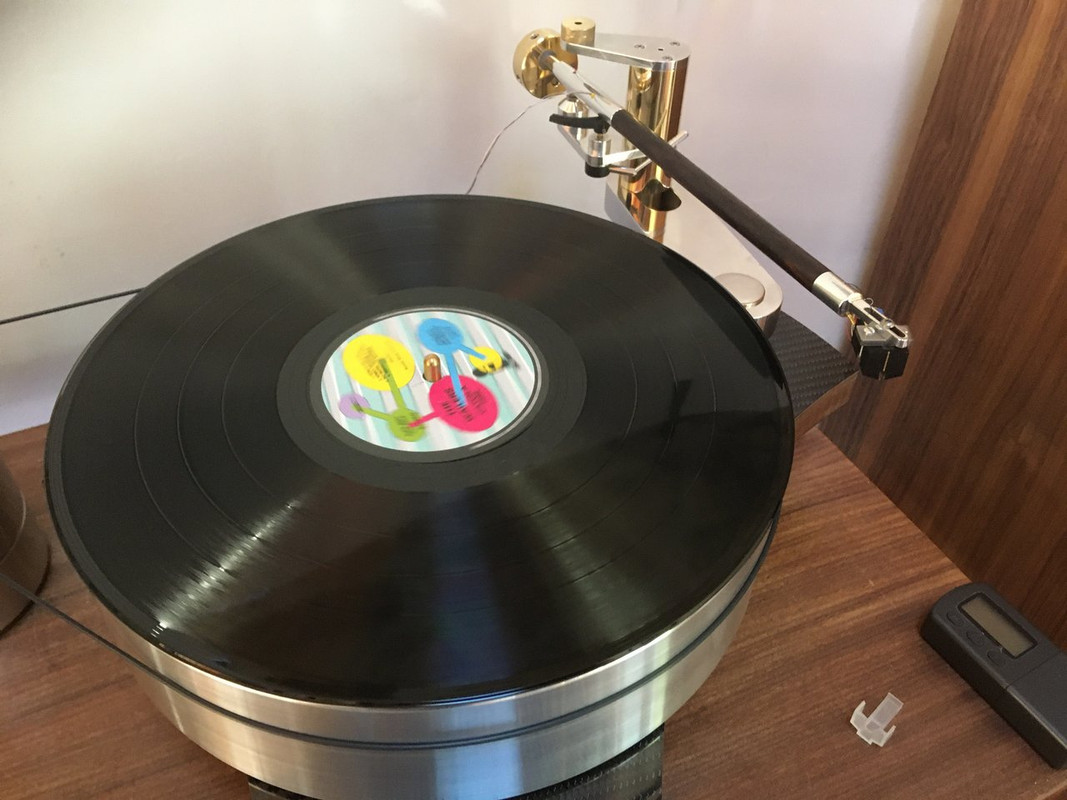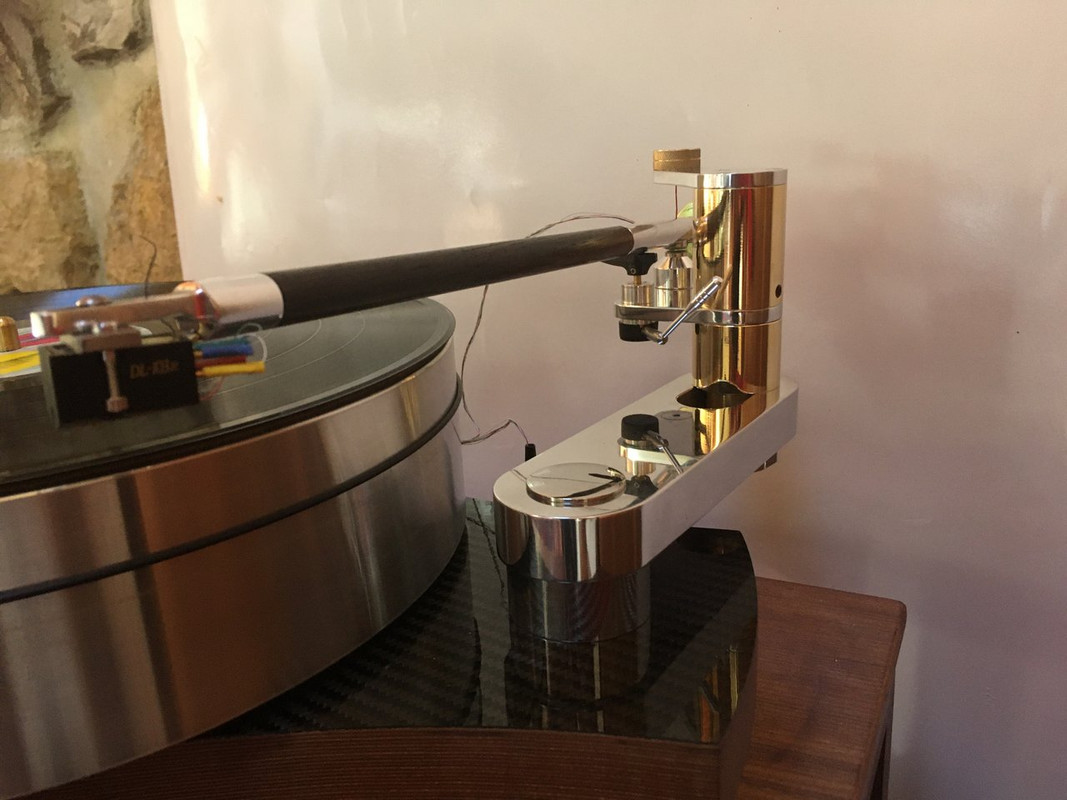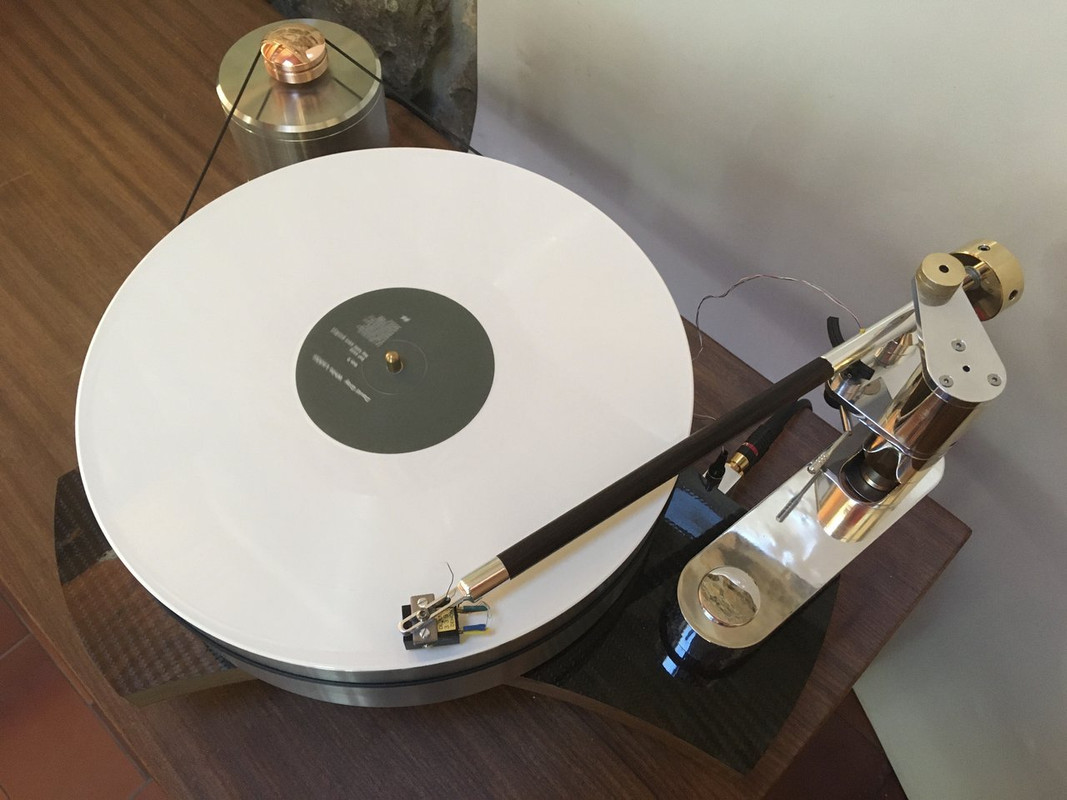It is finished...12" Brazilian rosewood wand.
Wow, that's a really lovely looking arm.

jeff
deadhead,
That looks pretty damn amazing! I have been following the thread for awhile now and will soon start my own journey of the "great Shroeder clone". Did you machine the parts yourself? the finish looks amazing. I am knew to machining and am jumping-in with and in-depth project. I imagine I will have to go through the thread several more times. Again congrats! Looks amazing. Final question did you use brass & aluminium?
That looks pretty damn amazing! I have been following the thread for awhile now and will soon start my own journey of the "great Shroeder clone". Did you machine the parts yourself? the finish looks amazing. I am knew to machining and am jumping-in with and in-depth project. I imagine I will have to go through the thread several more times. Again congrats! Looks amazing. Final question did you use brass & aluminium?
Has anyone other than the man himself (Frank Shroeder) machined their own parts for their clone?
I imagine that nearly everyone has, but I had help with some of it.
When you say that you are new to machining...how new ? do yo have a lathe ?
I did use brass and aluminium and titanium....nothing magnetic.
deadhead, yes I have a lathe, its a mini lathe 7x14. I've been turning for about 3 weeks now. Turned a bacote 1"x12" for the tonearm however it has a small crack in it after drilling the center. Also have same size piece of African or Brazilian ebony that I will work on soon. I am still trying to wrap my head around the dimension of the brass and aluminium pieces. Some brass and aluminium pieces I have turned so far have decent finishes but not quite where I want them to be. Also still tweaking the lathe. Its a fairly big project to start with full TT build and tone arm. By the time I am done I should know my lathe fairly well. Thanks for the response.
Hi, deadhead, Strike 3
When using a smaller hobby lathe. It is most important to mount the lathe on a piece of ground 3/4" to 1" steel plate or a used granite surface plate for rigidity. It will be very hard to get a good surface finish without rigidity. You will soon realize that the lathe is just the start, the tooling / accessories is the real cost.
Also, trying to drill a long, straight, hole in a piece of hardwood is VERY tricky. Look up "gun drilling" on YouTube. If possible, upgrade to a ( good used )larger lathe as the cost and quality of many foreign ( China) lathes / parts leaves a lot to be desired for serious work. Quality machinery is one of those areas where you get what you pay for !! I do realize that small lathes are mostly sold to people with limited room.
Best of luck.
Joe
When using a smaller hobby lathe. It is most important to mount the lathe on a piece of ground 3/4" to 1" steel plate or a used granite surface plate for rigidity. It will be very hard to get a good surface finish without rigidity. You will soon realize that the lathe is just the start, the tooling / accessories is the real cost.
Also, trying to drill a long, straight, hole in a piece of hardwood is VERY tricky. Look up "gun drilling" on YouTube. If possible, upgrade to a ( good used )larger lathe as the cost and quality of many foreign ( China) lathes / parts leaves a lot to be desired for serious work. Quality machinery is one of those areas where you get what you pay for !! I do realize that small lathes are mostly sold to people with limited room.
Best of luck.
Joe
I was lucky enough to purchase a Hardinge HLV toolroom lathe a few years ago, it replaced my old Raglan 'LittleJohn' and WOW, what a difference it made. Using 5C collets instead of a 3 or 4 jaw chuck makes it trivial to produce accurate parts, especially pulleys and other pieces where concentricity is important.
The Hardinge weighs in at around 1700lbs and is remarkably rigid
and is remarkably rigid
The only downside is that it's limited to around 10" diameter work, so I still have to outsource platters
The Hardinge weighs in at around 1700lbs
The only downside is that it's limited to around 10" diameter work, so I still have to outsource platters
Another thing to be aware of with lathes, they need to leveled correctly or they will machine a taper. When I say level I mean that the bed as to straight. Even the best tool room will turn a taper if not installed correctly. When I installed my Colchester I use a 1" pipe with 2 x 2" aluminium collars 1' apart to set the bed straight. There are videos on Youtube on how to do this.
Joe is right I started with a Sheraton (an Aussie copy of the South Bend 9") a great lathe I sold this and bought a Chinese 12" and it was awful I only had it 6 months before I found a good 1967 Colchester Master 6.5 and never looked back.
Good luck with the TT / arm project.
Joe is right I started with a Sheraton (an Aussie copy of the South Bend 9") a great lathe I sold this and bought a Chinese 12" and it was awful I only had it 6 months before I found a good 1967 Colchester Master 6.5 and never looked back.
Good luck with the TT / arm project.
Hi, Warrjon
Absolutely, the best lathes will not cut properly if not precision leveled. You gotta love old American lathes !!! Built to do precision work for decades, with a little TLC !! With some patience and looking around, you can sometimes get a high quality lathe for a reasonable price.
Joe
Absolutely, the best lathes will not cut properly if not precision leveled. You gotta love old American lathes !!! Built to do precision work for decades, with a little TLC !! With some patience and looking around, you can sometimes get a high quality lathe for a reasonable price.
Joe
Some brass and aluminium pieces I have turned so far have decent finishes but not quite where I want them to be. Also still tweaking the lathe. Its a fairly big project to start with full TT build and tone arm. By the time I am done I should know my lathe fairly well. Thanks for the response.
Strike3, I know this is not a machining forum but you asked the question so I'll give you an answer.
Speed and Feed is critical to surface finish and diametric accuracy. There are loads of calculators on the net for this and it might take you while to get your head around this.
Next is tooling, I expect you are using insert tools, if so then the insert also has an effect on the surface finish I use 3 types of inserts. Cheap eBay general purpose for most stuff and roughing. I then keep high quality (read expensive) N inserts for plastic, aluminium, brass and other soft metal, then M for steel, stainless and cast iron.
Hope this helps.
Hi, Warrjon
Absolutely, the best lathes will not cut properly if not precision leveled. You gotta love old American lathes !!! Built to do precision work for decades, with a little TLC !! With some patience and looking around, you can sometimes get a high quality lathe for a reasonable price.
Joe
Pretty sure the Hardinge HLV has three feet! The heavy bed is also near impossible to twist. We have one at work and I've never seen any requirement to level (bad choice of words) it. OTOH, my small Logan at home changes like crazy when the seasons change and the concrete garage floor moves.
- Home
- Source & Line
- Analogue Source
- DIY Schroeder Tonearm???


